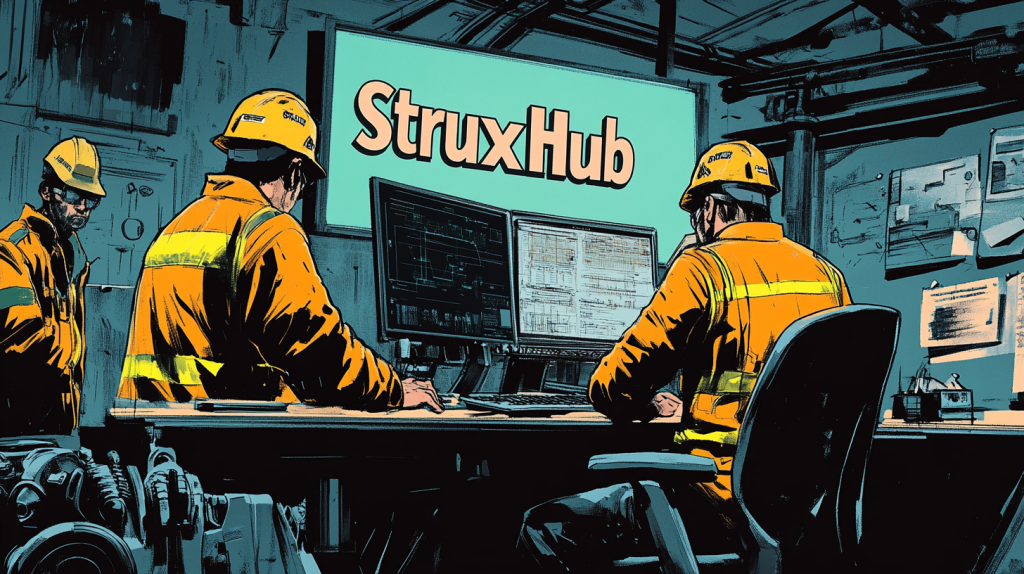Solar Construction Jobs Are Booming in the USA… But Where Are the Workers?
Table of Contents:
The solar industry is experiencing unprecedented growth, with more projects breaking ground than ever before. Governments are pushing renewable energy policies, corporations are committing to net-zero goals, and homeowners are installing solar panels at record speeds. The world is finally embracing solar power.
But there’s one major problem—there aren’t enough workers to build it all.
The demand for skilled labor in solar and energy storage is outpacing the available workforce, leaving contractors, project managers, and energy firms scrambling to find electricians, installers, and engineers. With labor shortages threatening to delay projects and drive up costs, the industry is facing one of its biggest challenges yet.
So, what’s causing this workforce crunch, and more importantly, how do we fix it?

The Labor Shortage Crisis in the Solar Industry
The numbers tell a concerning story. According to reports from renewable energy associations, the solar workforce needs to double or even triple in the coming years to keep up with demand.
Some of the biggest factors driving the labor shortage include:
1. The Renewable Energy Boom is Outpacing Workforce Growth
With government incentives, corporate sustainability goals, and rising energy costs pushing the transition to clean power, solar installation rates are increasing exponentially. However, the workforce isn’t scaling at the same rate. The industry simply hasn’t trained enough workers to meet demand, leading to a severe talent gap.
2. Not Enough Training Programs and Apprenticeships
Unlike traditional construction trades, the solar industry lacks structured training pipelines and apprenticeship programs that guide new workers into the field. While electrical and engineering degrees exist, hands-on experience in solar installation, battery storage, and grid integration remains limited.
3. Competition with Other Construction and Energy Sectors
Solar companies aren’t just competing with each other for workers—they’re competing with commercial construction, oil and gas, and infrastructure projects. With increased wages in other sectors, many potential solar workers are choosing more established industries with clearer career paths.
4. Burnout and High Turnover Rates
Solar jobs can be physically demanding, requiring long hours in extreme weather conditions. The pressure to meet tight project deadlines, combined with a shortage of skilled labor, means that many workers experience burnout, leading to high turnover rates.
How the Solar Industry Can Overcome the Labor Shortage

1. Investing in Workforce Development and Training
Companies need to take a proactive role in developing the next generation of solar professionals. Partnering with trade schools, launching apprenticeship programs, and offering on-the-job training can help bring more workers into the industry. Some solar firms are even providing tuition assistance and certifications to attract new talent.
2. Embracing Automation and AI in Solar Construction
While robots won’t fully replace human workers anytime soon, automation can fill some of the labor gaps. AI-driven project management software, automated panel installation systems, and drones for site surveys are already being used to increase efficiency and reduce manual labor needs.
3. Improving Job Retention and Career Growth Opportunities
To keep workers in the industry, companies must offer competitive wages, career advancement pathways, and a better work-life balance. This includes improving safety measures, reducing job site inefficiencies, and creating clear promotion structures.
4. Leveraging Smart Construction Management Software to Maximize Efficiency
One of the most effective ways to combat labor shortages is to optimize workforce management and job site coordination. This is where advanced construction project management software comes into play.
By using digital tools to streamline workforce scheduling, track labor productivity, and improve logistics, companies can do more with fewer workers. This includes:
- Automating crew assignments and shift planning to reduce downtime.
- Using real-time data tracking to prevent bottlenecks in construction timelines.
- Enhancing job site communication to improve efficiency across teams

Where Does StruxHub Fit In?
As the solar industry grapples with labor shortages, construction management platforms like StruxHub offer a way to keep projects on track. StruxHub provides tools for workforce coordination, job site tracking, and scheduling automation, helping companies manage labor resources more effectively.
By optimizing project workflows and reducing inefficiencies, StruxHub allows solar firms to get the most out of their existing workforce, ensuring projects are completed on time and within budget—even with limited labor.
The Role of Government and Industry Initiatives in Workforce Development

1. Expanding Federal and State Incentives for Green Energy Jobs
Government incentives for renewable energy should not only focus on tax credits for solar installations but also on funding workforce development programs. Some states are offering training grants to companies that hire and train solar workers, but more support is needed on a federal level.
2. Bridging the Gap Between Colleges and the Solar Industry
Many technical schools and universities do not currently offer specialized solar training programs. Industry leaders must work alongside educational institutions to develop curriculum and training pipelines that prepare graduates for real-world solar projects.
3. Addressing Diversity and Inclusion in the Solar Workforce
Encouraging more diversity in the workforce can help solve labor shortages. Women and underrepresented groups remain a small fraction of the solar workforce. Expanding outreach and training opportunities to these groups could help bring new workers into the field.
How Solar Companies Can Stay Competitive in a Tight Labor Market
1. Offering Competitive Wages and Benefits
To attract and retain skilled workers, solar companies need to match or exceed wages offered by other construction trades. Providing health benefits, paid training programs, and career growth opportunities can also make solar jobs more appealing.
2. Leveraging Technology to Improve Workplace Efficiency
Companies that implement smart construction management software can manage job site inefficiencies, schedule crews more effectively, and minimize labor costs.
3. Prioritizing Worker Satisfaction and Job Site Conditions
Retaining workers is just as important as hiring them. Providing safe, efficient, and well-managed work environments can help reduce turnover and attract more workers to the industry.
The solar industry is at a crossroads—demand is surging, but the workforce isn’t keeping up. To keep the clean energy transition moving forward, companies must invest in workforce development, embrace automation, and improve job site efficiency.
Smart project management tools like StruxHub are playing a key role in helping solar companies overcome workforce shortages, ensuring that the renewable energy revolution continues without unnecessary delays.
The future of solar is bright—but only if we have enough hands to build it.

StruxHub
Experience the power of StruxHub today and witness firsthand how it can revolutionize your construction operations.
Unlock the Full Potential of Your Construction Projects with StruxHub
StruxHub enhances efficiency and coordination across all project phases, providing a single source of truth that eliminates silos and fosters collaboration. Real-time updates, financial management tools, and seamless commvunication features ensure that all team members and stakeholders are aligned and informed, reducing the risk of errors and delays. With comprehensive solutions for document management, risk mitigation, and quality control, StruxHub maintains project integrity and safety, while mobile access and integration capabilities further enhance project flexibility and efficiency.
StruxHub’s Key Features and Benefits:
- Advanced Delivery Management: Automate and optimize your delivery schedules, ensuring materials arrive just in time, every time.
- Site Communication: Utilize georeferenced maps and instant messaging to keep every team member informed and aligned.
- Construction Materials Management: Track inventory levels and manage materials procurement with ease, reducing waste and avoiding project delays.
- Construction Safety & Inspection Workflows: Implement customizable mobile forms for conducting safety inspections and managing compliance documentation effortlessly.
- Short-Term Scheduling: Visualize project tasks with detailed floor plans, linking each activity to specific locations for better planning accuracy.
- Construction Resource Management: Efficiently allocate personnel and equipment, maximizing productivity and reducing idle time.
StruxHub’s Product Offering:
- StruxHub Deliveries: Simplifies the coordination of incoming deliveries, ensuring materials and equipment are precisely timed to project needs.
- StruxHub Logistics: Offers intelligent site logistics planning, from crane scheduling to space allocation, for smoother operations.
- StruxHub Safety: Elevates on-site safety standards with easy-to-use tools for inspections, permits, and incident reporting.
- StruxHub Scheduling: Enhances project timelines with intuitive scheduling tools that ensure tasks are completed efficiently and on time.
With StruxHub, construction companies can look forward to a streamlined, more efficient project execution that delivers on time and within budget. Embrace the power of innovation and take your construction projects to the next level.
Don’t miss out on the opportunity to optimize your construction management processes with StruxHub. Sign up for a free demo today. Let’s build smarter, together.




